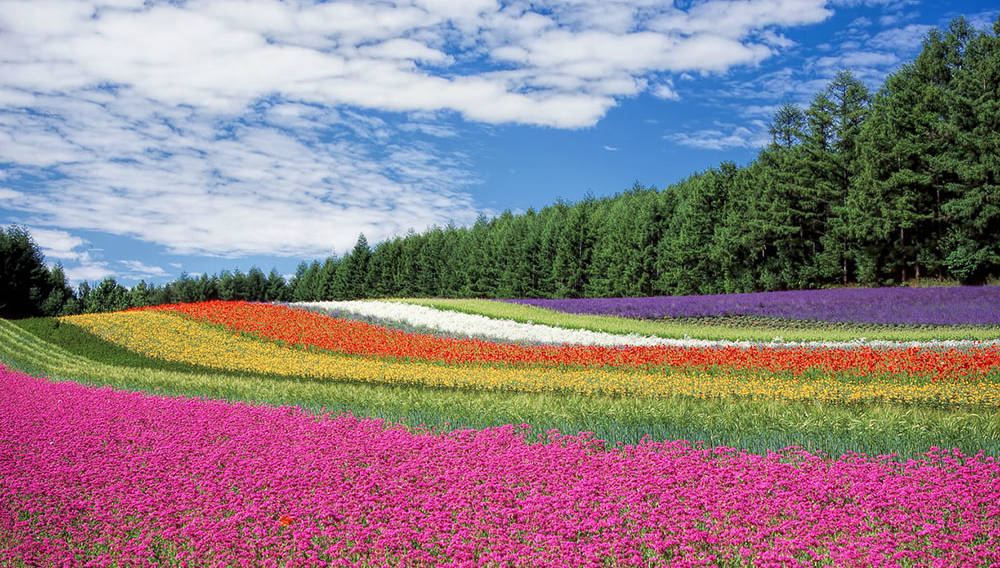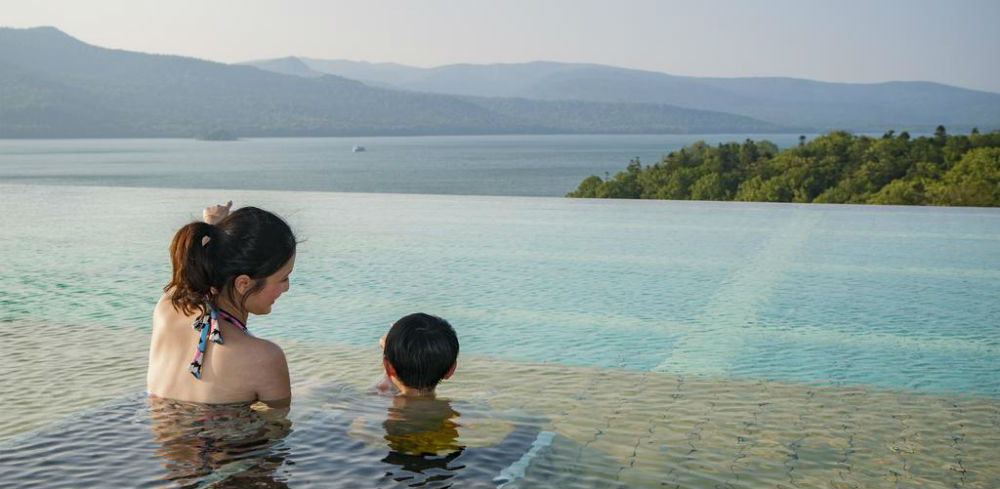Hokkaido: Northern Hokkaido
Northern Hokkaido | Southern Hokkaido
Asahikawa
The island's second-largest city, Asahikawa is also the transport hub of central Hokkaido. It holds an Ice Festival at the beginning of February. It is a good base for seeing the Daisetsuzan National Park. Two hours east of Asahikawa is Sounkyo Gorge. 24km long and with spectacular rock walls and waterfalls, it is popular for hiking and climbing. The highest mountain in Hokkaido is the volcanic Asahi-dake at 2290m. 1 hour 20 minutes by train to the south of Asahikawa, in the geographical center of Hokkaido, is the town of Furano. It's famous for its wine and vast fields of lavender, which bloom in mid-June.

The stunning colors of flowers blooming in Furano
Wakkanai
The northernmost city in Japan, 1 hour by air from Sapporo, Wakkanai feels like the end of the earth. The surrounding landscape is barren and windswept. The port processes huge catches of crab, herring and salmon, and the city's seafood is among the best in the world - probably the only reason you'd want to visit the city. But it is also the ferry terminal for the Rishiri and Rebun islands, and the youth hostels are popular for those who really want to get away from it all and enjoy the islands' unspoiled beauty. Cape Soya, 30 km north of Wakkanai, is the northernmost place in Japan. Alan Booth's classic book 'The Roads to Sata' (1986) details his walk from Cape Soya to Cape Sata in the south of Kyushu.
Abashiri
The east of Hokkaido is a major tourist attraction and tour buses offer the most convenient transport in the area as there are few trains. Abashiri is the largest coastal city. It is home to the Folklore Museum, which has artifacts of the Orokko and Giriyark peoples who inhabited the area. The Moyoro Shell Mound is a site of archaeological interest. It also has a maximum security prison, where the inmates carve Nipopo dolls, a popular souvenir.

Enjoying an infinity pool overlooking Lake Akan
The nearby Akan National Park is actually more easily reached from the city of Kushiro to the south. The park includes Lake Akan, Lake Kussharo and Lake Mashu. strange natural phenomenon - balls of algae called marimo rise in the morning and sink at night - can be seen in the water of Lake Akan. The water in Lake Kussharo is acid and it has almost no fish. The island in the middle of the lake, Nakajima, is actually a volcano. There is a youth hostel on the lakeshore with access to a neighboring onsen. Lake Mashu, often shrouded by fog, has a reputation as being mysterious. Its water - a beautiful sapphire-blue from a distance - is actually transparent to a depth of 36m. No outlet from the lake has ever been found. About 100km, 2 hours by train, east of Kushiro is the fishing city of Nemuro. Nearby Lake Furen is visited by up 20,000 swans each year from October to March.
(From Nemuro, you can see Kunashiri Island, one of the disputed Nothern Territories. Along with Etorofu, Shikotan and the Habomai Islands, the territory was annexed by the Soviet Union at the end of World War II. As Japan and the USSR (or the Russian Federation) never signed a peace treaty, the issue is still to be resolved. It is a favorite bone of contention for the rightist groups)
Related content
- See our page on the official websites for each prefecture and major city: Guide to Japan's Regions and Cities
